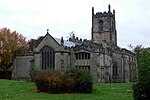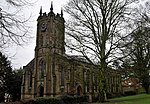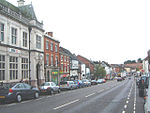Ivanhoe School
1954 establishments in EnglandAcademies in LeicestershireAshby-de-la-ZouchEast Midlands school stubsEducational institutions established in 1954 ... and 2 more
Secondary schools in LeicestershireUse British English from July 2016
Ivanhoe School (formerly Ivanhoe College) is a coeducational secondary school located in Ashby-de-la-Zouch, Leicestershire, England.The school was established in 1954 and named after the historical novel Ivanhoe by Sir Walter Scott, part of which was set at Ashby de la Zouch Castle.It was previously a community middle school with specialist technology college status. In July 2012 Ivanhoe College converted to academy status. In September 2022 the school expanded its age range to 16, becoming a secondary school.
Excerpt from the Wikipedia article Ivanhoe School (License: CC BY-SA 3.0, Authors).Ivanhoe School
North Street, North West Leicestershire
Geographical coordinates (GPS) Address Nearby Places Show on map
Geographical coordinates (GPS)
| Latitude | Longitude |
|---|---|
| N 52.74994 ° | E -1.46848 ° |
Address
North Street
LE65 1HS North West Leicestershire
England, United Kingdom
Open on Google Maps









